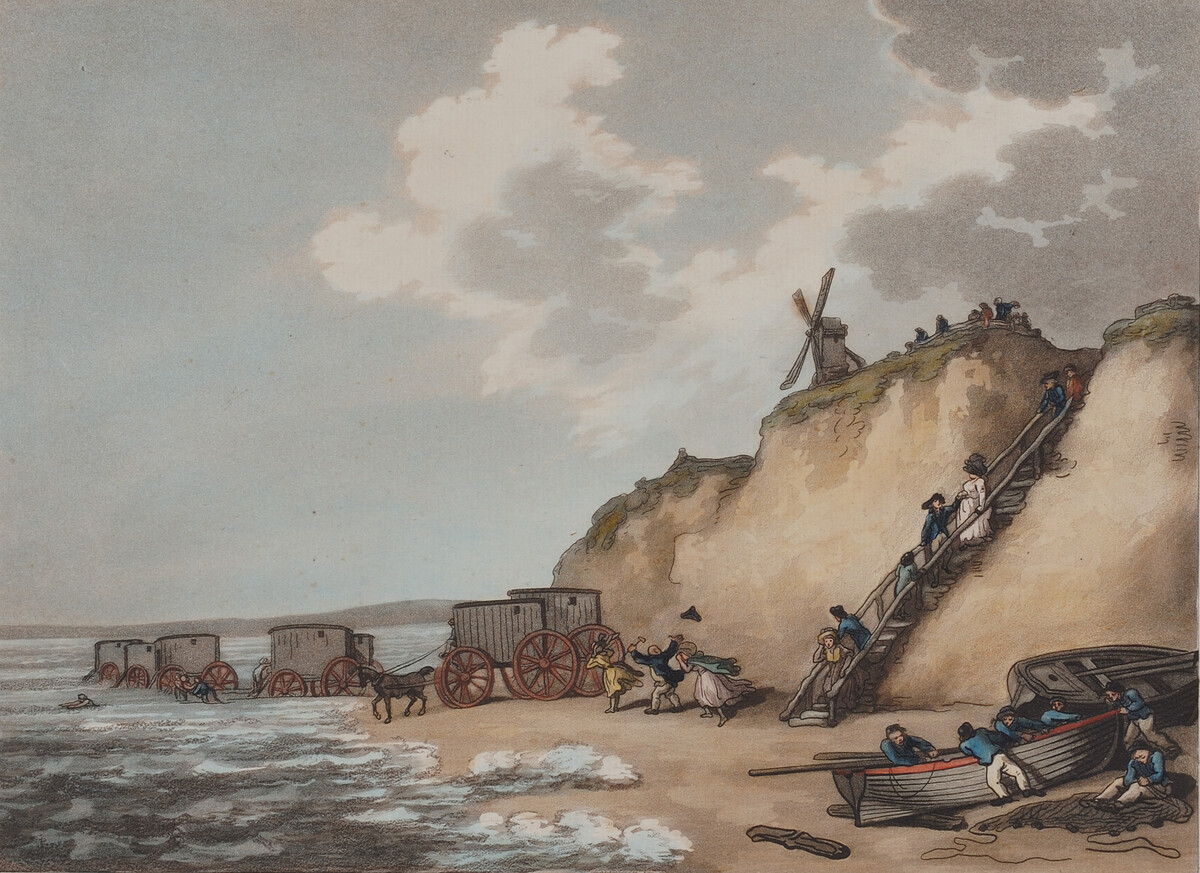FA205960 – Bathing Machines, Thomas Rowlandson; Henry Alken; Messrs Robinsons, 1790; Regency

Part of the One Minute Wonders trail, a story written by one of our volunteers, inspired by objects on display.
By Andrew Bradstreet
Some of you may recognise these ‘huts on wheels’ founded on Brighton Beach in the 1750s. These ones were found at the bottom of the cliffs by West Street, near ‘Widow Gibb’s’ windmill.
Why were people using them, do you think? Why were they so popular? (And will that man in the picture get his Tricon hat back?)
In the early 18th Century, seawater was identified as having curative properties, with sea bathing recommended. These ‘bathing chariots’ were wooden changing rooms on wheels, usually drawn into the water by horse, so the bather could step directly into the sea.
Men usually bathed naked, and women changed into a linen bathing gown. Hefty attendants of both sexes, called ‘dippers’, helped to assist with the required number of therapeutic dunkings, as there was little active swimming.
How fascinating that, over two hundred years later, people still partake in sea-water bathing, and feel the same benefits our ancestors did. Might you be tempted yourself?